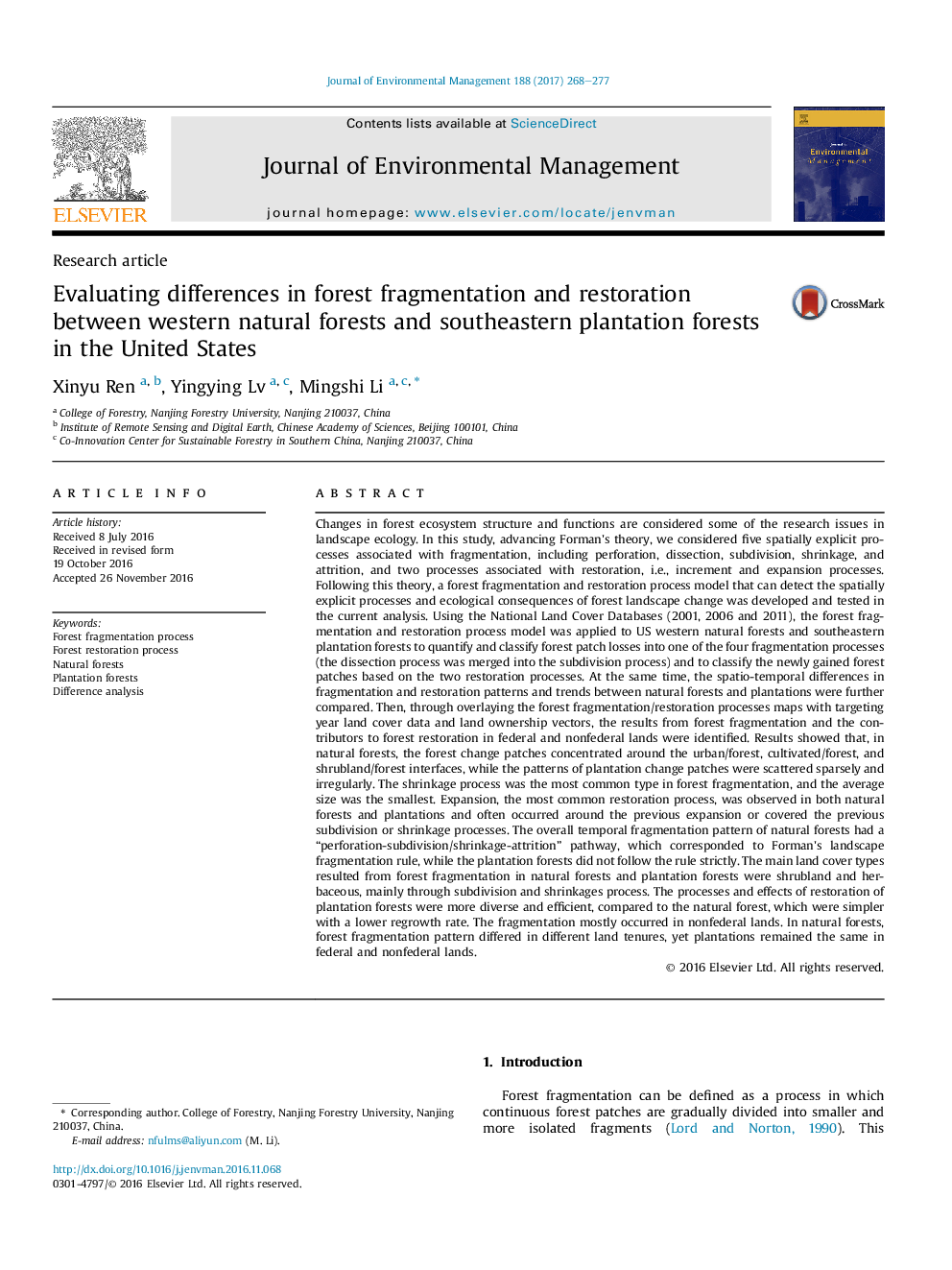| Article ID | Journal | Published Year | Pages | File Type |
|---|---|---|---|---|
| 5117144 | Journal of Environmental Management | 2017 | 10 Pages |
Abstract
Changes in forest ecosystem structure and functions are considered some of the research issues in landscape ecology. In this study, advancing Forman's theory, we considered five spatially explicit processes associated with fragmentation, including perforation, dissection, subdivision, shrinkage, and attrition, and two processes associated with restoration, i.e., increment and expansion processes. Following this theory, a forest fragmentation and restoration process model that can detect the spatially explicit processes and ecological consequences of forest landscape change was developed and tested in the current analysis. Using the National Land Cover Databases (2001, 2006 and 2011), the forest fragmentation and restoration process model was applied to US western natural forests and southeastern plantation forests to quantify and classify forest patch losses into one of the four fragmentation processes (the dissection process was merged into the subdivision process) and to classify the newly gained forest patches based on the two restoration processes. At the same time, the spatio-temporal differences in fragmentation and restoration patterns and trends between natural forests and plantations were further compared. Then, through overlaying the forest fragmentation/restoration processes maps with targeting year land cover data and land ownership vectors, the results from forest fragmentation and the contributors to forest restoration in federal and nonfederal lands were identified. Results showed that, in natural forests, the forest change patches concentrated around the urban/forest, cultivated/forest, and shrubland/forest interfaces, while the patterns of plantation change patches were scattered sparsely and irregularly. The shrinkage process was the most common type in forest fragmentation, and the average size was the smallest. Expansion, the most common restoration process, was observed in both natural forests and plantations and often occurred around the previous expansion or covered the previous subdivision or shrinkage processes. The overall temporal fragmentation pattern of natural forests had a “perforation-subdivision/shrinkage-attrition” pathway, which corresponded to Forman's landscape fragmentation rule, while the plantation forests did not follow the rule strictly. The main land cover types resulted from forest fragmentation in natural forests and plantation forests were shrubland and herbaceous, mainly through subdivision and shrinkages process. The processes and effects of restoration of plantation forests were more diverse and efficient, compared to the natural forest, which were simpler with a lower regrowth rate. The fragmentation mostly occurred in nonfederal lands. In natural forests, forest fragmentation pattern differed in different land tenures, yet plantations remained the same in federal and nonfederal lands.
Related Topics
Physical Sciences and Engineering
Energy
Renewable Energy, Sustainability and the Environment
Authors
Xinyu Ren, Yingying Lv, Mingshi Li,
